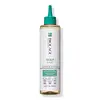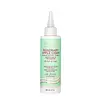What's inside
What's inside
 Key Ingredients
Key Ingredients

 Benefits
Benefits

 Concerns
Concerns

 Ingredients Side-by-side
Ingredients Side-by-side

Water
Skin ConditioningAlcohol Denat.
AntimicrobialButylene Glycol
HumectantHydroxyethylpiperazine Ethane Sulfonic Acid
BufferingPropanediol
SolventGlycolic Acid
BufferingSodium Hydroxide
BufferingPEG-40 Hydrogenated Castor Oil
EmulsifyingCaprylyl Glycol
EmollientPotassium Sorbate
PreservativeParfum
MaskingTetrasodium Glutamate Diacetate
Saccharomyces/Xylinum/Black Tea Ferment
Skin ConditioningPropylene Glycol
HumectantLimonene
PerfumingGlycerin
HumectantSorbitol
HumectantCamellia Sinensis Leaf Extract
AntimicrobialCitric Acid
BufferingSodium Benzoate
MaskingAscorbic Acid
AntioxidantWater, Alcohol Denat., Butylene Glycol, Hydroxyethylpiperazine Ethane Sulfonic Acid, Propanediol, Glycolic Acid, Sodium Hydroxide, PEG-40 Hydrogenated Castor Oil, Caprylyl Glycol, Potassium Sorbate, Parfum, Tetrasodium Glutamate Diacetate, Saccharomyces/Xylinum/Black Tea Ferment, Propylene Glycol, Limonene, Glycerin, Sorbitol, Camellia Sinensis Leaf Extract, Citric Acid, Sodium Benzoate, Ascorbic Acid
Water
Skin ConditioningCocamidopropyl Betaine
CleansingPropanediol
SolventGlycolic Acid
BufferingLactic Acid
BufferingSorbitan Oleate Decylglucoside Crosspolymer
CleansingPanthenol
Skin ConditioningSalicylic Acid
MaskingNiacinamide
SmoothingAlgin
MaskingParfum
MaskingSodium Benzoate
MaskingPotassium Sorbate
PreservativeSodium PCA
HumectantMenthol
MaskingRosmarinus Officinalis Leaf Extract
AntimicrobialSpirulina Maxima Powder
AntioxidantVinegar
Mentha Piperita Oil
MaskingWater, Cocamidopropyl Betaine, Propanediol, Glycolic Acid, Lactic Acid, Sorbitan Oleate Decylglucoside Crosspolymer, Panthenol, Salicylic Acid, Niacinamide, Algin, Parfum, Sodium Benzoate, Potassium Sorbate, Sodium PCA, Menthol, Rosmarinus Officinalis Leaf Extract, Spirulina Maxima Powder, Vinegar, Mentha Piperita Oil
Ingredients Explained
These ingredients are found in both products.
Ingredients higher up in an ingredient list are typically present in a larger amount.
Glycolic Acid is arguably the most famous alpha hydroxy acid (AHA) with tons of research backing its benefits.
It is found naturally in sugar cane but the form used in skincare is usually synthetic for purity and stability.
Glycolic acid removes the top layer of dead skin cells to allow newer and fresher ones to emerge.
AHAs work by breaking down the structural “glue” that holds old skin cells in place. When that buildup is gone, your skin can renew itself more efficiently.
Research also shows glycolic acid stimulates collagen production, helping to firm and thicken the skin over time. This is one of its biggest advantages over other AHAs.
Overall, glycolic acid helps with:
Fun fact: Glycolic acid boosts skin hydration by helping it produce molecules that increase hyaluronic acid naturally.
To work best, glycolic acid products should have a pH between 3-4 (that’s where exfoliation is most effective but still gentle on skin).
The pH and concentration of a product are key to its effectiveness:
It is normal to feel a slight stinging sensation when using glycolic acid. This usually fades as your skin adjusts.
Because glycolic acid has the smallest molecular size in the AHA family, it can penetrate deeper, which enhances its effectiveness but also makes it more likely to irritate sensitive skin.
If your skin is very sensitive or prone to rosacea, glycolic acid may be too strong; in that case, try milder options like lactic acid or a PHA instead.
Recent studies suggest glycolic acid might even help protect against UV damage. But don’t skip sunscreen! Freshly exfoliated skin is more sensitive to the sun.
Glycolic acid is a skincare superstar. It smooths, brightens, hydrates, and firms the skin. Unless you’re highly sensitive, it’s well worth adding to your routine.
Read more about some other popular AHA's here:
Learn more about Glycolic AcidParfum is a catch-all term for an ingredient or more that is used to give a scent to products.
Also called "fragrance", this ingredient can be a blend of hundreds of chemicals or plant oils. This means every product with "fragrance" or "parfum" in the ingredients list is a different mixture.
For instance, Habanolide is a proprietary trade name for a specific aroma chemical. When used as a fragrance ingredient in cosmetics, most aroma chemicals fall under the broad labeling category of “FRAGRANCE” or “PARFUM” according to EU and US regulations.
The term 'parfum' or 'fragrance' is not regulated in many countries. In many cases, it is up to the brand to define this term.
For instance, many brands choose to label themselves as "fragrance-free" because they are not using synthetic fragrances. However, their products may still contain ingredients such as essential oils that are considered a fragrance by INCI standards.
One example is Calendula flower extract. Calendula is an essential oil that still imparts a scent or 'fragrance'.
Depending on the blend, the ingredients in the mixture can cause allergies and sensitivities on the skin. Some ingredients that are known EU allergens include linalool and citronellol.
Parfum can also be used to mask or cover an unpleasant scent.
The bottom line is: not all fragrances/parfum/ingredients are created equally. If you are worried about fragrances, we recommend taking a closer look at an ingredient. And of course, we always recommend speaking with a professional.
Learn more about ParfumPotassium Sorbate is a preservative used to prevent yeast and mold in products. It is commonly found in both cosmetic and food products.
This ingredient comes from potassium salt derived from sorbic acid. Sorbic acid is a natural antibiotic and effective against fungus.
Both potassium sorbate and sorbic acid can be found in baked goods, cheeses, dried meats, dried fruit, ice cream, pickles, wine, yogurt, and more.
You'll often find this ingredient used with other preservatives.
Learn more about Potassium SorbatePropanediol is an all-star ingredient. It softens, hydrates, and smooths the skin.
It’s often used to:
Propanediol is not likely to cause sensitivity and considered safe to use. It is derived from corn or petroleum with a clear color and no scent.
Learn more about PropanediolSodium Benzoate is a preservative. It's used in both cosmetic and food products to inhibit the growth of mold and bacteria. It is typically produced synthetically.
Both the US FDA and EU Health Committee have approved the use of sodium benzoate. In the US, levels of 0.1% (of the total product) are allowed.
Sodium benzoate works as a preservative by inhibiting the growth of bacteria inside of cells. It prevents the cell from fermenting a type of sugar using an enzyme called phosphofructokinase.
It is the salt of benzoic acid. Foods containing sodium benzoate include soda, salad dressings, condiments, fruit juices, wines, and snack foods.
Studies for using ascorbic acid and sodium benzoate in cosmetics are lacking, especially in skincare routines with multiple steps.
We always recommend speaking with a professional, such as a dermatologist, if you have any concerns.
Learn more about Sodium BenzoateWater. It's the most common cosmetic ingredient of all. You'll usually see it at the top of ingredient lists, meaning that it makes up the largest part of the product.
So why is it so popular? Water most often acts as a solvent - this means that it helps dissolve other ingredients into the formulation.
You'll also recognize water as that liquid we all need to stay alive. If you see this, drink a glass of water. Stay hydrated!
Learn more about Water